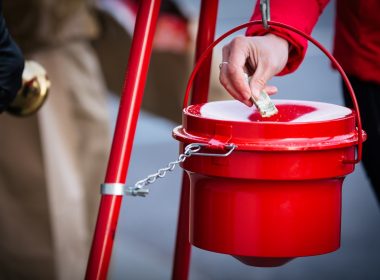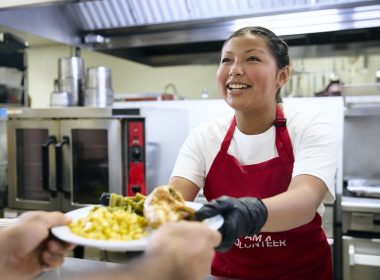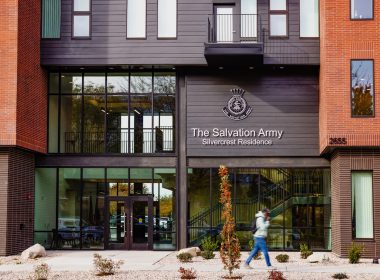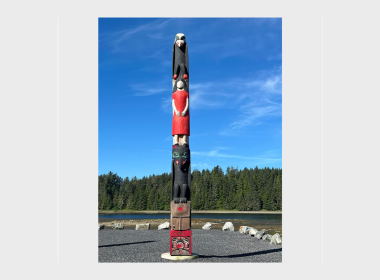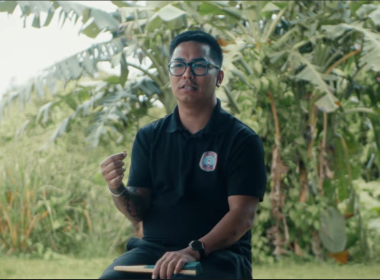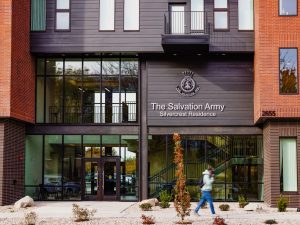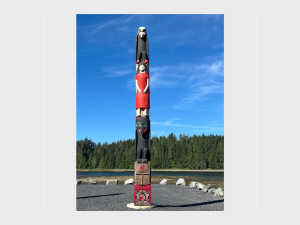New Center for Applied Research and Innovation (CARI) will ideate high-impact solutions to social challenges.
What if research for strategies to address homelessness was provided in a real-time feedback loop? What if it could happen in the heart of a shelter environment?
A program at The Salvation Army Center of Hope in Anaheim, California, says it’s possible. The Center for Applied Research and Innovation (CARI) aims to identify large-scale solutions to homelessness and other social challenges through social science research and program design.
It has met the moment.
In Orange County, where the Center of Hope is located, a poll from the University of California Irvine School of Social Ecology found more than 70 percent of residents described homelessness as “a very serious problem” alongside the amount of affordable housing.
The County is the third largest in California, a state that holds nearly 30 percent of the nation’s total population of unhoused people, according to reports compiled by the U.S. Department of Housing and Urban Development.
While HUD’s biannual point-in-time reports reflect a positive change—more people were housed in Orange County in 2022 compared to 2019—data, and public opinion, shows there is more to be done.
“The Salvation Army has a mission to lead the nonprofit world in social science innovation, responding to the extraordinary challenges of society today, like homelessness,” said Managing Director Dr. Ben Hurst. “I think CARI is important because it helps keep The Salvation Army on the forward foot running towards the fight of these great challenges instead of being reactionary to the problems all around us. It puts the energy in the innovation space that is really critical in the day in which we live.”
CARI rests on The Salvation Army’s 14-acre, comprehensive Center of Hope campus alongside a 325-bed emergency homeless shelter, Pathways supportive housing apartments and the Adult Rehabilitation Center (ARC). The goal of the campus? Life transformation, said Divisional Secretary for Orange County Major Ken Perine.
“We’re not about housing people for the sake of housing them,” he said. “The goal is forward movement in life and at the position where they can thrive.”
CARI is a part of that. Presently, CARI runs out of a portable unit as construction crews bring the vision for the Center of Hope to life. Inside is a blue neon sign illuminating the phrase “Think Revolutionary.” And that’s Hurst’s goal—to ideate “high-impact solutions.”
“The big picture goal is for CARI to be a large-scale solutions center that is a collaborative hub of some of The Salvation Army’s best thinkers and problem solvers along with great solutions experts outside the Army,” Hurst said, “coming together and researching, designing and ultimately implementing enterprise-level solutions to these huge problems, like homelessness.”
A new model for navigating homelessness
CARI is the brainchild of Hurst, who completed a doctoral degree in Social Work from the University of Southern California in 2023. There, his dissertation focused on chronic homelessness and the Life Transformation Program, a key component of an approach he calls the Homeless Throughput System.
Hurst likens the Homeless Throughput System to a baseball diamond, with each step representing a different phase of an individual’s journey from homelessness to self-sufficiency. At the pitcher’s mound is CARI, considering outputs for each individual. A homerun? Individuals who are not just housed, but drug-free, back to work and reintegrated into society.
“We look at people as just a few steps from victory.”
Major Ken Perine, Divisional Secretary for Orange County
At the first base: Emergency shelter, when people come from the streets to The Salvation Army’s shelter and receive trauma-informed care and case management. Once they have reached stabilization, they move to the second base: the Life Transformation Program, which focuses on recovery from addiction and other wraparound services. “The early research and early data point to a breakthrough homeless response,” Hurst said.
Third base: Housing, both in the 72-unit Pathways supportive housing apartments on the Center of Hope Campus and locally.
“We don’t look at people as victims,” said Perine. “We look at people as just a few steps from victory, meaning they’re just a few steps from getting to where they need to be, which changes the whole dynamic.”
From research to action
Shannon Lamb has worked for more than 12 years in The Salvation Army’s homelessness programs in Orange County and is currently the Director of Quality Assurance for homeless service programs and a CARI researcher.
“I’m a very boots-on-the-ground details person and Dr. Ben is the major visionary,” she said. “We work really well together.”
She said Hurst leads a majority of the macro research, which filters down when they meet as a team to decide what to focus on. Lamb said she digs into the programmatic research, considering questions like: How do we make this happen? What do we need? What is it going to cost us? How does it fit with our mission?
One way CARI research has been used is by identifying what Hurst called a statistically small but significantly underserved population of unhoused Native Americans in Orange County. He said CARI designed a program response from scratch and achieved county funding for it: the Eagleman Project.
Through a grant from Equity in OC (EiOC), an Orange County Health Care Agency initiative, The Salvation Army served as the lead organization for the Eagleman Project, working with Native and other organizations with the goal to provide temporary or permanent housing for 50 Native American/Alaskan Natives experiencing homelessness or at risk of homelessness in Orange County by April 2024.
“We did have to switch our aim a little bit,” said Lamb. “We started with reaching out to those who were homeless and found that the need was actually much greater for families that were facing eviction… It wasn’t something we were aware of.”
Then project lead Frank Luna said the project met its housing goal, and began needed larger conversations about recognition—the tribes indigenous to Orange County are state recognized instead of federally recognized, something he said impacts items like scholarships and funding that are typically exclusive to federally recognized tribes.
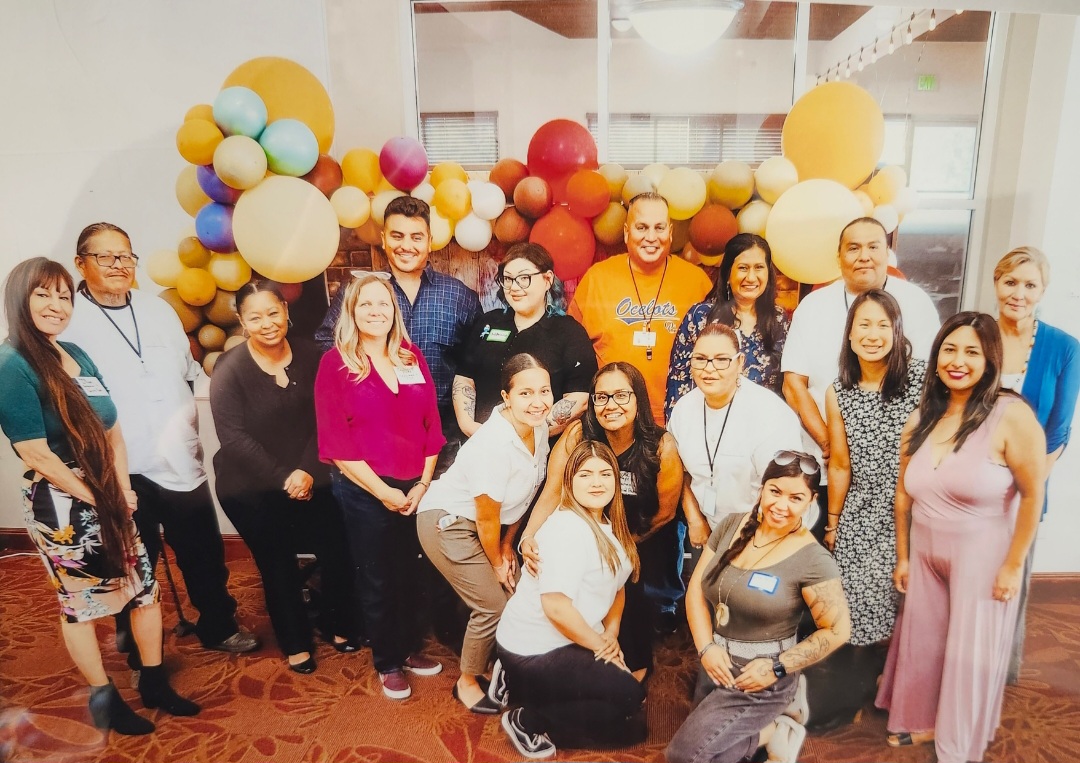
“There’s a lack of resources for the people that are actually indigenous to Orange County,” said Luna, a descendant from one of the tribes in Orange County. “This project opened up the doors so that they got equal access to resources. It’s just not to those that are from federally recognized tribes, so that was a really special part of the project.”
Luna said the Eagleman Project held four community events, and has reached over 250 people in Orange County and the surrounding areas, through workshops, community forums and Community Action labs, with some meetings held at Salvation Army facilities. Additionally, he said an advisory committee attends city council meetings in what he called “American Indian hotspots” to speak during the public comment section to raise awareness.
“The overall goal was to really create that visibility, and maybe be the linchpin for the system change,” he said.
A history of innovation
For CARI, success is measured through creating dated research that leads to new programs, like the Eagleman Project, Hurst said.
“I think success is measured in effectively producing research and data that influences conversations in these critical spaces, as well as producing new innovative programs that The Salvation Army can replicate to address these critical issues,” he said. “Data and research will be helpful… but they need to lead to something ultimately.”
That’s why location is key.
“Synthesizing the data and research that’s done into actionable programs that The Salvation Army can deploy in the field rapidly—that’s the goal,” he said. “It’s situated on the 14-acre Center of Hope campus on purpose, so that it has real-time feedback immediately from the field, and some of the sharpest insight into what’s working and what’s not working.”
The idea for a Salvation Army research branch is expressed as far back as in Salvation Army Founder William Booth’s 1890 book, “In Darkest England,” which shared the concept of an “Intelligence Department” among Booth’s list of social reforms needed for people experiencing poverty in Victorian England.
“Power, it has been said, belongs to the best informed, and if we are effectually to deal with the forces of social evil, we must have ready at our fingers’ ends the accumulated experience and information of the whole world on this subject,” Booth wrote. “The collection of facts and the systematic record of them would be invaluable, rendering the result of the experiments of previous generations available for the information of our own.”
Since Booth’s writings from The Salvation Army’s early days, research has been integrated to inform the organization’s social services offerings. In Scotland, The Salvation Army and the University of Stirling established The Salvation Army Centre for Addiction Services and Research to further research on addictions and interventions in 2017. In the U.S., The Salvation Army partnered with Indiana University Lilly Family School of Philanthropy to provide fresh key data about poverty and need in the U.S. through the Human Needs Index.
CARI has caught the attention of the community, too. Orange County Area Command Director of Development Justin Coleman said before CARI, The Salvation Army in Orange County had not received a $1 million gift, despite the fact the county is often ranked among the wealthiest in the nation.
“We don’t want to use that as a benchmark, but it tells you a lot that when you have a big vision, and a bold vision, how people will step up and make big and bold gifts,” he said, noting that within the first year of fundraising, multiple $1 million gifts came in from donors who hadn’t given to The Salvation Army previously.
Among them, the Samueli family, the namesake of CARI’s Samueli Applied Research Hub. At the groundbreaking ceremony for the Center of Hope Jan. 31, 2022, the family presented The Salvation Army with a ceremonial $1 million check from the Samueli Foundation.
“We have a lot of momentum…more than I think we’ve ever had,” Coleman said, noting The Salvation Army had raised almost 90 percent of the funds needed to build the physical home of CARI at the time of publication, and has its eyes set on an endowment campaign to sustain the research center.
After all, the social challenges CARI focuses on are considered “wicked problems”—challenges with breadths hard to understand, and ever-evolving presentation in communities, Hurst said. He noted homelessness is a prime example, with many facets that solutions often respond only to one aspect of.
“Finding solutions is very difficult,” he said. “We have to keep innovating to come up with really extraordinary answers.”
Do Good:
- See how The Salvation Army fights homelessness.
- What cause best fits your personality? Take our quiz and discover where you can make the biggest impact for good today.

